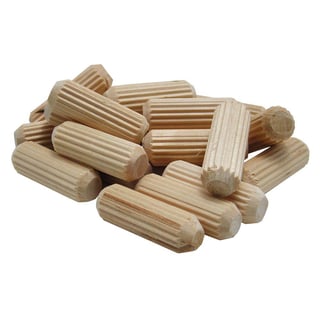I repaired a small end table recently and one of the aprons used dowel joinery to attach to a leg. I drilled out the dowel since a couple were broken and I wanted then to all be the same. I replaced the dowel with some poplar dowel from a local hardware store. I then glued it back together.
I cannot be certain but in hindsight I think the dowels might not have been glued in and they were fluted dowel which the replacement was not. If I had used fluted dowel I think I might have been able to get away from glue and just used a wooden hammer to knock it closed.
When I think of fluted dowel I picture these guys...
Image from HomeDepot.com
If I understand correctly that shape will allow the dowel to be inserted easily but make it harder to move around? I see these on economical furniture all the time and I never glue them.
